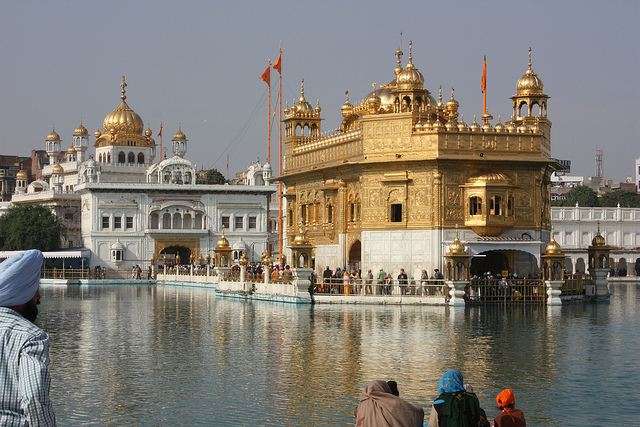UK Has Elected its Most Diverse Parliament in History
There are now more female, non-white, disabled, and LGBT Members of Parliament than ever before.

Feeding the hungry is a time-honored tradition among people of many faiths, all over the world.
In Amritsar, India, the Sikh gather in a Golden Temple to serve 100,000 meals every single day of the year in a kitchen that never closes.
The langar, or community kitchen, found in this temple is the largest free kitchen on the planet, serving literally tons of food from a sprawling complex of white marble and gold.
The food never runs out, all are welcome, and no one ever pays a single rupee.
With its crowds swelling to some 150,000 on holy days, this Sikh temple sees more daily traffic than the India's most popular tourist attraction, the Taj Mahal.
Look closely and you'll see that, beyond merely filling empty tummies, there is something more radical going on here.
In a society still heavily influenced by a class system, an ancient caste of hierarchies that for millennia dictated (among other things) who got to eat what, and with whom, this is a place where all people are considered equal.
From the volunteers who come from various religions to the diners of all socioeconomic backgrounds, they sit row upon row, cross-legged on the floor, enjoying the same meal. The langar embodies the ideal of equality and thus has always been more than just a place to eat for free.
"Sikh gurus worked very intentionally to challenge social distinctions in various forms," said Samran Jeet Singh, the senior religion fellow for the Sikh Coalition in the U.S.
In Amritsar, India, the Sikh gather in a Golden Temple to serve 100,000 meals every single day of the year in a kitchen that never closes.
The langar, or community kitchen, found in this temple is the largest free kitchen on the planet, serving literally tons of food from a sprawling complex of white marble and gold.
The food never runs out, all are welcome, and no one ever pays a single rupee.
With its crowds swelling to some 150,000 on holy days, this Sikh temple sees more daily traffic than the India's most popular tourist attraction, the Taj Mahal.
Look closely and you'll see that, beyond merely filling empty tummies, there is something more radical going on here.
In a society still heavily influenced by a class system, an ancient caste of hierarchies that for millennia dictated (among other things) who got to eat what, and with whom, this is a place where all people are considered equal.
From the volunteers who come from various religions to the diners of all socioeconomic backgrounds, they sit row upon row, cross-legged on the floor, enjoying the same meal. The langar embodies the ideal of equality and thus has always been more than just a place to eat for free.
"Sikh gurus worked very intentionally to challenge social distinctions in various forms," said Samran Jeet Singh, the senior religion fellow for the Sikh Coalition in the U.S.
For that reason, Sikhism's founder, Guru Nanak, told all male Sikh followers to wear turbans. Before that, tradition in India dictated that only the noble elite would wear them. Similarly, every Sikh man has taken the middle or last name of 'Singh,' to remove outward allusions to inequality.
So, too, with the langar.
But just who pays for all this?
A staggering volume of foodstuffs is needed in the Golden Temple kitchen daily-12,000 kilos of flour, 1,500 kilos of rice, 13,000 kilos of lentils, and up to 2,000 kilos of vegetables. Like every bit of the labor, the budget is entirely donated, sometimes up to two years in advance. People give, mostly anonymously, out of a sense of religious and social obligation.
"There are only three things in our religion," a 55-year-old Sikh volunteer from California who moved to Amritsar in 2013 told the Munchies TV show. "Chant the name of God, sing religious hymns, and volunteer. I work as long as my legs allow me to stand."
(READ more from the TV show Munchies on Vice) Photos: (top) Arian Zwegers (bottom) Fulvio Spada, CC
Share This Inspiring Story… (below)
Be the first to comment